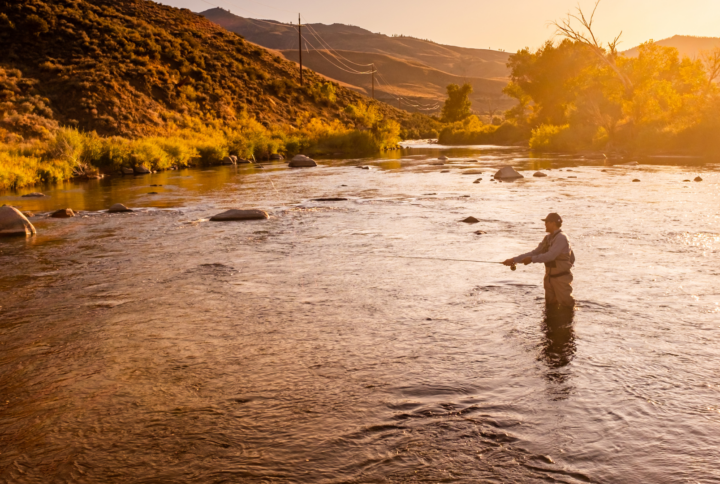Salt River - below Stewart Mountain Dam - Arizona
Fly Fishing River Report & Conditions
Salt River – below Stewart Mountain Dam - Water Flow Chart
Salt River – below Stewart Mountain Dam - Weather report & radar
Salt River – below Stewart Mountain Dam - General hatch chart
| Month | Hatch | Time of Day | Recommended Fly Sizes | Popular Fly Patterns |
|---|---|---|---|---|
| January | Midge | Afternoon | #18 – #22 | Griffith’s Gnat, Zebra Midge |
| February | Midge, Caddis | Afternoon | #16 – #22 | Griffith’s Gnat, Elk Hair Caddis |
| March | Caddis, Midge | Afternoon | #14 – #22 | Elk Hair Caddis, Zebra Midge |
| April | Caddis, Blue Winged Olive | Midday | #16 – #20 | Elk Hair Caddis, Parachute BWO |
| May | Terrestrials (due to warmer temps) | All Day | #10 – #14 | Ants, Beetles |
| June | Terrestrials, Midge | All Day | #10 – #22 | Hoppers, Ants, Beetles, Zebra Midge |
| July | Terrestrials, Midge | All Day | #8 – #22 | Hoppers, Ants, Beetles, Zebra Midge |
| August | Terrestrials, Midge | All Day | #8 – #22 | Hoppers, Crickets, Ants, Beetles |
| September | Terrestrials | All Day | #8 – #14 | Hoppers, Crickets, Ants, Beetles |
| October | Caddis, Terrestrials | Midday | #14 – #18, #10 – #14 for terrestrials | Elk Hair Caddis, Ants, Beetles |
| November | Midge | Afternoon | #18 – #22 | Griffith’s Gnat, Zebra Midge |
| December | Midge | Afternoon | #18 – #22 | Zebra Midge, Griffith’s Gnat |
Salt River – below Stewart Mountain Dam Access Points
Fly fishing on the Salt River, below Stewart Mountain Dam offers great opportunities for catching a broad range of fish species. However, certain access points prove to be more convenient and productive:
- Blue Point Picnic Area: Located off Highway 87 and offers smooth banks for casting.
- Coon Bluff: Great spot for rainbow trout; particularly well-suited for beginners.
- Phon D. Sutton Recreation Area: Provides plenty of space for casting and usually has good hatches.
- Water Users Recreation Area: A highly productive spot known for large browns in fall above the dam.
- Sheep Crossing: Located north of Mesa, this spot tends not to be as crowded as other access points, offering a serene fishing experience.
Note: Remember to have a valid Arizona fishing license and a Tonto Daily Pass when accessing these points.
Salt River – below Stewart Mountain Dam Fishing Spots
The Salt River, particularly below the Stewart Mountain Dam, offers not just picturesque scenery but also unrivaled fly fishing opportunities. Here are some of the best spots to consider:
- Blue Point Bridge: Provides a wide space for casting and is quite good for trout.
- Coon Bluff: Known for a diverse fish population. Both flat water and runs available.
- Phon D. Sutton Recreation Site: Apart from fishing, it also offers good picnic spots.
- Granite Reef: This is a day use area which is where the Salt River ends and has multiple species of fish.
- Water Users Recreation Site: A good spot for fresh, easy-to-catch fish.
Each site allows a different fly fishing experience. Take scouting opportunities before setting up to understand the water and fish movement.
Salt River – below Stewart Mountain Dam Local Fish Species
- Rainbow Trout: The Salt River below Stewart Mountain Dam is known for having a healthy population of rainbow trout, making it a popular destination for fly fishing enthusiasts.
- Brown Trout: Brown trout also inhabit these waters. They are often fished in the tail water stretches.
- Largemouth Bass: This species is an exciting one for anglers to catch because of their fighting spirit and their prevalence in the Salt River system.
- Smallmouth Bass: The Smallmouth Bass can be found in greater numbers and they provide a great challenge for fly fishers.
- Carp: Although considered by some as a ‘trash’ fish, Carp are incredibly strong and can be a thrilling catch on a fly rod.
- Yellow Bass: This species is fairly common in the Salt River and it’s known for its distinctive, bright yellow coloring.
- Crappie: Crappie, both Black and White, are often sought after by fly fishers due to their delicious taste when cooked and the enjoyable fight they put up when getting caught.
- Channel Catfish: One of the largest species one can catch in Salt River is the Channel Catfish. It provides a monumental challenge for fly fishers, as well as great satisfaction when it can be successfully caught.
About the Salt River – below Stewart Mountain Dam
The Salt River, Arizona’s second-longest river, commences a new journey below the Stewart Mountain Dam. Originally constructed in 1930, this dam has greatly influenced the course and character of the river.
- Pre-Dam Era: Historically, the Salt River carved out a natural oasis amidst the arid desert landscape, nurtured by abundant and diverse wildlife.
- Post-Dam Construction: The dam’s construction fundamentally altered the river, transforming it into a captivating playground for water and nature enthusiasts.
The Salt River below the dam offers a fantastic venue for myriad recreational activities like tubing, kayaking, and fishing, attracting locals and tourists alike. Its riparian habitat is also a registered Important Bird Area, home to numerous vibrant bird species. Next time you’re in Arizona, don’t forget to explore this historic and incredibly vibrant part of the Salt River!
Community Contributions
Be part of the fishing community-
Submit your update!
Coming Soon



